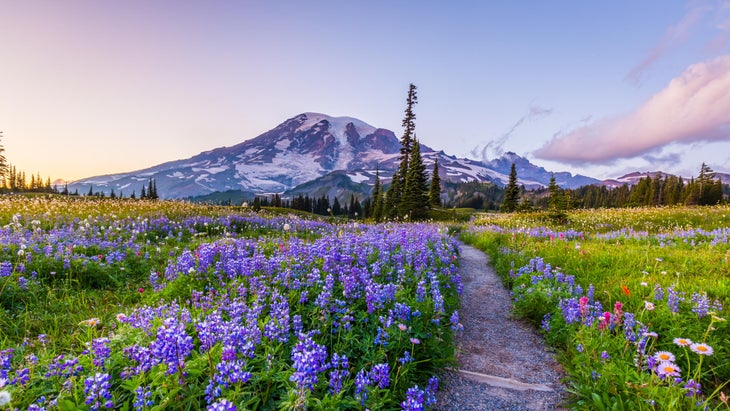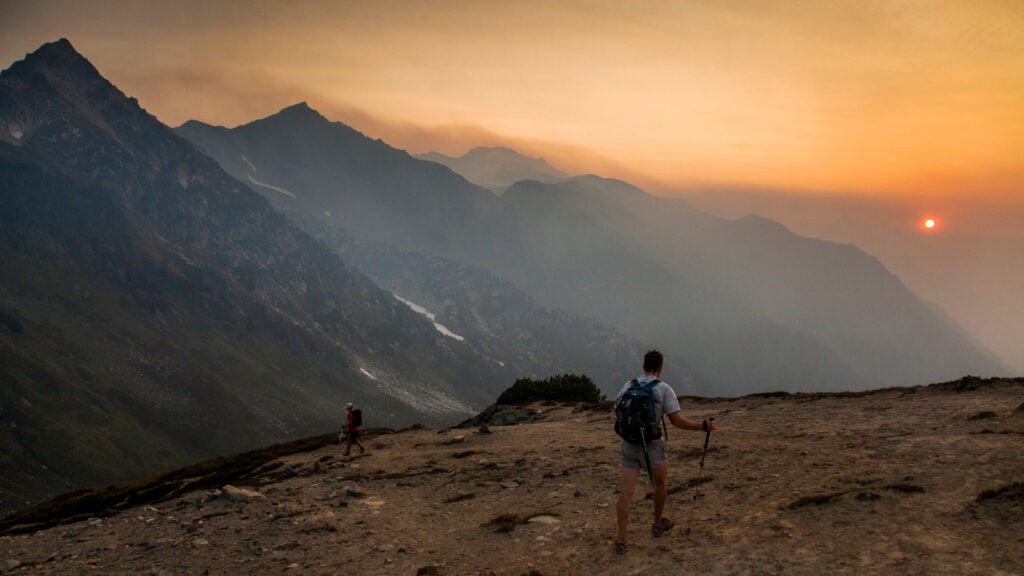Products You May Like
Heading out the door? Read this article on the new Outside+ app available now on iOS devices for members!
Download the app.
This year marks Backpacker’s 50th anniversary. To celebrate, we asked four of our favorite writers to write a letter to the backpackers of the future—specifically, to 2073, when Backpacker will turn 100 years old. Here, executive editor Adam Roy speculates about how the actions we take over the next five decades could endanger the outdoors—or change them for the better.
Dear Backpackers,
Hiking has a way of tapping you into a larger timescale than the one we humans live on. Redwood forests, granite cliffs, deep canyons that spiderweb across the desert: You spend enough time wandering through capital-O Old things, and you start to appreciate the way that nature’s permanence dwarfs ours. But of course, humans do leave an impact on our environment, and because of the way we do it, it’s often future generations who have to deal with the consequences.
I suppose I should start by saying I’m sorry. As I write this, anthropogenic climate change continues to progress, and despite the blinking red warning lights that are the International Union for Conservation of Nature’s reports, my generation still hasn’t found the will or managed to seize the power necessary to meaningfully slow it. I genuinely believe we’re trying. According to the Pew Research center, 71 percent of Millennials—more than any other generation—believe that combating climate change should be our top priority as a community, and the majority of us are for alternative energy and against expanding fossil fuel development. Still, it hasn’t been enough: If emissions continue unchecked, the average person in 2073 will live in a climate that’s roughly 12°F hotter than today.
People who love the outdoors aren’t the only, or even the worst-hit, victims of the climate crisis—millions of people face the loss of their homes and even lives. But we’re often the first to confront its effects. In the worst case, you may be dealing with some truly dire ones. In the southwestern U.S., summer temperatures may now make large swathes of the country deadly to hike during the warmest parts of the year, while shorter, milder winters may have driven skiers and snowshoers to extinction. Megafires, and the increasing length of fire season, have likely made it impossible to accomplish an end-to-end thru-hike of the Pacific Crest Trail or Continental Divide Trail. In the southeast, some coastal routes are likely well on their way to being underwater. Not that it necessarily matters: There may not be anywhere left to hike at all. If the contingent of anti-public-lands extremists in Congress has gotten their way, they’ve likely carved up America’s national forests, public rangelands, and monuments and handed them off to oil and gas companies, developers, or private investors who immediately fenced them off and put up “no trespassing” signs. In the worst case, your adventures—your whole world—have shrunk until they fit on a TV screen.
But I won’t accept that future. Prognostication is a creative act: When we predict something, good or bad, we take the first step toward making it a reality. I want the best for you, backpackers of the late 21st century, partially because I may be one of you: With any luck, I’m still kicking, a sprightly 84-year-old rambling through the mountains and canyons. So let me conjure up a brighter future for us.

The year is 2073, and while we may not have solved climate change yet, we’re turning it around. By cutting emissions we’ve kept the rise in temperature to a minimum, and the haze that used to cloud visibility at parks like Grand Canyon is gone, replaced by crystal-clear air and hundred-mile views. Decades of smart wildfire policy (sometimes, you just have to let it burn) have begun to return our overgrown forests to a more natural state. We’ve long since reached our goal of protecting 30 percent of the United States’s land and water, much of it under the stewardship of the Native nations that originally managed it. From flowers to wolves, wildlife thrives.
The biggest change, though, is that more people just care. Thank the well-funded, universal outdoor education and gear libraries that public school students get now. Or maybe thank the movement to conserve and improve greenspace in and around major cities, so that urban hikers can notch an afternoon or a weekend on the trail without ever getting into a car. (One group you don’t need to thank? The politicians who treated public lands like their private fiefdoms, parceling them out to their energy-sector and developer donors so they could line their pockets. We wised up and kicked those pirates to the curb.) We’re healthier, happier, and a better community for it.
While hiking has become our de facto national activity, the crowds aren’t nearly as bad as you’d think. Federal, state, and local land managers—now well-funded like we only could have dreamed of back in the day—have gone on a trail- and campsite-building spree, and invested in the skilled, professional staff necessary to maintain them. While tourists used to pack the U.S.’s biggest outdoor destinations cheek to jowl and ignore the rest, they now spread out more evenly across America’s 193 national parks. Thank a certain 100-year-old backpacking publication, which advocated for the creation of and promoted underappreciated-yet-beautiful destinations like Mojave, Craters of the Moon, and Cedar Breaks National Parks.
I can’t say for sure which of these two competing futures you’re experiencing, but I know which one I prefer, and I know that I—and Backpacker—am going to spend the next half-century fighting for it. If we succeeded? We’ll crack a beverage of our choice and celebrate on the trail. You shouldn’t have any problem finding me: I’ll be the old guy with the big gray beard.
Adam Roy
Executive Editor
